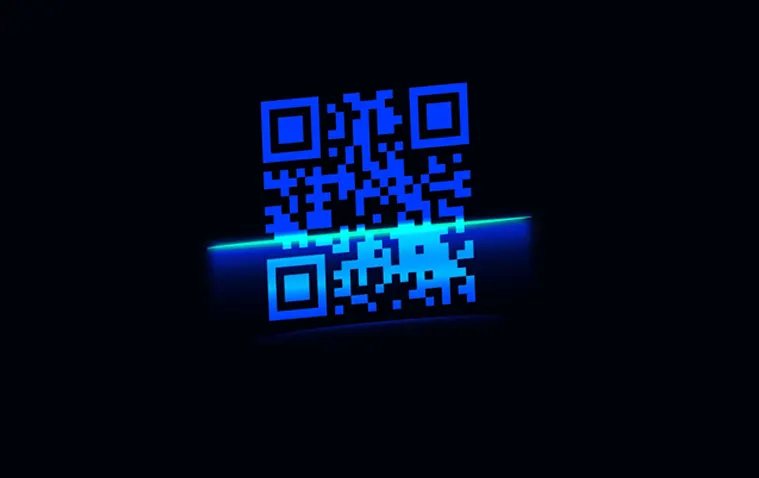The retail sector is always on the look for new and innovative ways to drive engagement and nurture relationships with customers – especially in the post-pandemic era. And customers, too, expect retailers to enhance their shopping experience — precisely why personalised service, loyalty programs, store financing, mobile technology, online and offline store integration, etc., are agents of change.
This is where the viability of barcodes in retail comes to the fore. From learning about customer behaviour and related preferences to providing insights into inventory and supply chain, barcodes make a strong case for their use in retail. They have been in use in the retail sector for years now and continue to evolve and improve with time.

Types of Barcodes Used in Retail
Basically, there are two types of barcodes:
Linear/1D
Linear or 1D are typical barcodes with vertical bars in black and numbers written under them. Most retail stores put these barcodes on products. They comprise letters, numbers, and symbols and type the code into the information database with product details like product name, type, colour, and size. Consumer goods, shipping labels, books, and loyalty cards use linear barcodes.
Matrix/2D
Matrix or 2D barcodes store additional information like images, quantity, website URLs, and other relevant data. Typical 2D barcodes render the information without connecting to the database. Some of the common uses include QR codes, which direct users to a website or work like a digital boarding pass.
2D barcodes are increasingly used in high-value manufacturing environments requiring detailed products and parts tracking, such as pharmaceuticals and medical equipment.
Difference Between 1D and 2D Barcodes
There are some key differences between 1D and 2D barcodes. While the former has horizontal or vertical grids, the latter has both. Furthermore, 2D barcodes can also include other patterns and shapes. Notably, 2D barcodes can hold up to 2000 characters, whereas 1D codes can only hold 80 characters.
On the flip side, 1D barcodes are easier to read; almost any type of scanner can read them. However, 2D barcodes need advanced scanners. Lastly, 2D barcodes have lesser physical footprints compared to 1D, so they are apt for smaller items with minimal space.
Typical Application of Barcodes in the Retail Industry
For a long time now, barcodes have been widely used for sales and inventory management. Today, the retail industry is the biggest beneficiary of this technology. Barcodes empower retailers to track their inventory so that they can price and sell the products easily and quickly. However, barcodes do a lot more than just keep track of the stock. They contribute to value-adding functionalities that set the motion right for improving retail.
Smooth Checkout
Barcode scanners placed at checkout counters make it easier for customers to quickly pay for the picked goods and get the billing done. With retail barcode technology, cashiers scan the items for barcodes, get the designated code, price, quantity, and other details, and close the purchase in no time.
Loss Prevention
Shoplifting is a common concern in retail stores. With retail barcode technology, this can be easily prevented. Barcode scanners positioned throughout the store can authenticate different items leaving the premise, thus making it difficult for robbers to get away with undetected merchandise.
Inventory Tracking
In any retail setting, it is imperative to keep track of the inventory levels and the location of products. Barcodes resolve these warehouse management concerns. Warehouse associates scan the latest items as soon as they arrive and when they are shipped out. Automated facilities use mounted barcode scanners linked to the database having all the important product information. Once this setup is realised, reliability and real-time updates about the inventory can be ensured.
Tracking Sales & Trends
Sales receipts come with barcodes. When tracked, they give retailers valuable insights into the products that are doing well and those that are slow moving. This information makes it easier to track and make informed decisions about items retailers should stock in the store and the inventory to maintain in stock for some items.
Invoicing
Many retailers use barcodes on their invoices to make accounts payable and receivable tracking easier. Businesses use invoice barcodes tied to specific customers. When that customer pays, an employee scans the barcode to ensure the correct account is credited. Invoice barcodes further speed up fulfillment. For instance, warehouse workers can print an invoice and scan the barcode to know the items and their location, thus reducing the risk of errors.
Generating Reports
When retail barcoding is in place, businesses can generate detailed reports on anything they want. For instance, retailers can develop reports on their total sales in a specific period, the total number of units of a particular item sold, or the average product sale price.
Easy Returns
Returns and exchange are a common vertical in the retail business. If any customer wants to return a particular item, having barcodes makes the process easier. The customer only must bring the item back to the retail store and get the barcode scanned. The system automatically generates a receipt including all the product-related information and processes the customer’s return request.
Streamlined Operations
As elucidated above, barcodes help streamline the sales process and inventory; this makes the overall store operation smoother. Retailers can maintain one database containing all product-related information to save the trouble of entering data into different systems manually.
Final Word
Barcode technology and its application in the retail industry have flourished in recent years. Retailers can now have access to a host of functionalities through barcode technology and make overall product operations more effective. However, it is essential to simplify the implementation of barcodes. This is where QodeNext can help. Get in touch with us to learn more.







